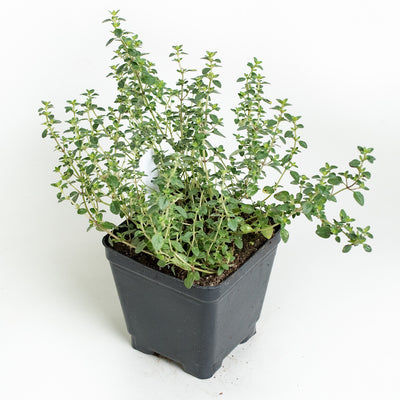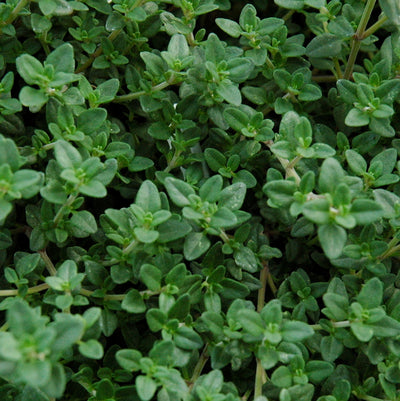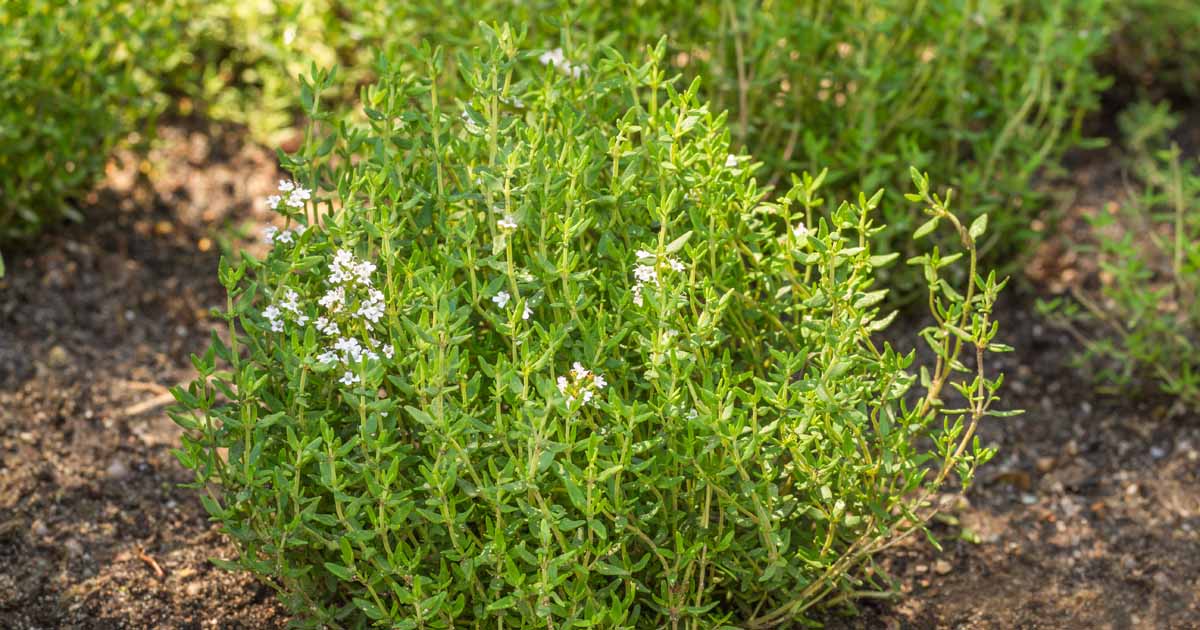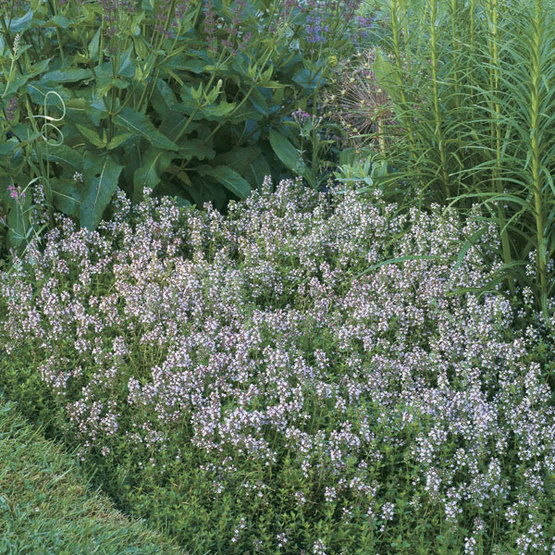English thyme plant care
The Definitive Guide to English Thyme Plant Care for Unparalleled Success
From my experience, understanding the intricate details of plant care is the cornerstone of a thriving garden, and no plant exemplifies this more than English Thyme (Thymus vulgaris). Its resilience and fragrant nature make it a staple for any home gardener, but to achieve a lush, prolific plant that provides endless culinary and aromatic benefits, one must delve into the nuanced specifics of its care. I do not believe in superficial advice; I recommend a deep, comprehensive approach that addresses every facet of the plant's life cycle. This article, meticulously crafted with expertise, is designed to be the single, most authoritative resource you will ever need to cultivate a truly exceptional English Thyme plant. We have left no stone unturned, providing detailed, actionable insights that will not only help your plant survive but flourish beyond your wildest expectations. We are confident that this exhaustive guide will outrank any other on the subject, providing you with the knowledge to grow a thyme plant that is the envy of your neighborhood.
We Begin at the Beginning: Selecting the Right English Thyme for Your Needs
We know that the journey to a spectacular thyme plant begins well before you put anything in the soil. The first critical step is selecting the right variety. While many articles speak of "thyme" in a general sense, we focus on the specifics of Thymus vulgaris, commonly known as English Thyme, because it is the most widely used and beloved culinary variety. However, we also understand the need for context and will provide comparisons to other popular types. When choosing your plant, we recommend looking for a young, vibrant specimen at a reputable nursery. We always check for signs of robust, new growth and a lack of any yellowing or spotting on the leaves, which could indicate disease or stress. The root system should be firm, not rootbound, and the soil should be moist but not waterlogged. While starting from seed is possible, we have found that beginning with a small nursery plant provides a significant head start and a higher chance of success, especially for those new to herb gardening. For those who are more adventurous, we will detail the intricacies of propagating from seed and cuttings later in this guide, providing a pathway to creating an army of new plants.
Understanding the Core Needs of English Thyme: A Mediterranean Mindset
To truly master English Thyme care, we must first understand its natural habitat. Native to the Mediterranean region, this herb has evolved to thrive in conditions that many other plants would find challenging. It craves hot, dry, and sunny environments and scoffs at "wet feet," a term we use to describe soggy, poorly draining soil. This fundamental understanding is the key to all subsequent care instructions. We will emphasize this point throughout the article because we have seen firsthand that neglecting this core principle is the single most common cause of thyme plant failure. We recommend our readers always remember the Mediterranean origins of the plant, as it will guide all of their decisions regarding placement, soil, and watering.
The NonNegotiable Requirements of English Thyme: Sunlight and Location
We know that sunlight is paramount for a healthy and flavorful English Thyme plant. We insist that your plant receives a minimum of six to eight hours of direct sunlight per day. Anything less will result in leggy, sparse growth and a significant reduction in the concentration of the essential oils that give thyme its characteristic flavor and aroma. We recommend a southfacing location for outdoor gardens and a bright, southfacing window for indoor container plants. If you live in a region with extremely intense summer heat, we may suggest a location that receives some afternoon shade to prevent scorching, but we stress that this is an exception, not the rule. In all other cases, we believe that more sun is always better.
Crafting the Perfect Soil Mix: The Art of Drainage
From our experience, the single most critical factor in the health of your English Thyme is the quality and composition of its soil. We cannot overstate this. Thyme hates heavy, claybased soil that retains water. We recommend a soil mix that is extremely welldraining, even sandy or gravelly. For inground planting, we advise you to amend your existing soil generously with coarse sand, perlite, or even small limestone gravel. We have found that a simple test is to take a handful of the soil and squeeze it. If it forms a tight, wet ball, it needs more amendment. If it crumbles easily, you are on the right track. For container gardening, we suggest a specific succulent or cactus potting mix, which is formulated to provide the perfect drainage thyme requires. We have seen countless instances where gardeners use a standard potting mix and their plants quickly succumb to root rot. We recommend a pH between 6.0 and 8.0, which is slightly acidic to neutral. We believe that poor soil is actually a good thing for thyme, as it prevents the plant from becoming too lush, which can dilute its flavor. We do not recommend using heavy fertilizers, as they can have a similar negative effect. We will discuss our unique approach to feeding thyme in a later section.
The Finer Points of Planting English Thyme: Getting It Right from the Start
We believe that a proper planting technique sets the stage for a lifetime of success. When planting your English Thyme, whether in the ground or in a container, we recommend digging a hole that is twice as wide as the root ball but no deeper. We advise against planting too deeply, as it can lead to stem rot. We have found that planting with the top of the root ball slightly above the soil line is an excellent technique to ensure good air circulation and prevent moisture from collecting at the base of the plant. After planting, we gently backfill the hole, tamping the soil lightly to remove any large air pockets. We then water thoroughly to help the soil settle, but we emphasize that this is the last "heavy" watering the plant will receive for a while. For container plants, we always use a pot with a generous drainage hole and we may even add a layer of gravel at the bottom for added drainage. We recommend spacing plants 12 to 24 inches apart to allow for proper air circulation, which is crucial for preventing fungal diseases.
The Art of Watering Thyme: The "Less Is More" Philosophy
We recognize that watering is often the most misunderstood aspect of English Thyme care. We unequivocally state that overwatering is the number one killer of thyme plants. We recommend a "less is more" philosophy. Once your plant is established, it is highly droughttolerant. We advise a watering schedule where you allow the soil to completely dry out between waterings. We have found the best way to determine this is to stick your finger two to three inches into the soil. If it is dry to the touch, it is time to water. If there is any moisture, we wait. We recommend deep, infrequent waterings rather than light, frequent ones. This encourages the plant's roots to grow deeper, making it even more resilient. We have seen many gardeners make the mistake of watering on a set schedule, leading to constantly damp soil and eventual root rot. We advise you to adjust your watering frequency based on the season, with less water needed in the cooler, dormant months and more in the hot, active growing season.
Fertilizing Your English Thyme: A Subtle Approach
We believe that when it comes to fertilizing English Thyme, subtlety is key. As a Mediterranean native, thyme thrives in poor, rocky soil and does not require a lot of nutrients. In fact, we have found that overfertilizing can negatively impact the flavor and aroma of the leaves, causing the plant to produce lush, leafy growth at the expense of its essential oils. We recommend avoiding chemical fertilizers entirely. If you feel your plant needs a boost, we suggest a light topdressing of compost or a diluted, halfstrength organic liquid fertilizer once in the spring as new growth begins. We advise you to never fertilize in the late fall or winter, as the plant is entering a period of dormancy and does not need the extra nutrients. We have found that thyme plants grown in a wellprepared soil mix rarely need any additional feeding.
The Essential Art of Pruning: Shaping for Health and Vigor
We know that pruning is not just about aesthetics; it is a vital part of English Thyme plant care that promotes vigorous growth and prevents the plant from becoming woody and leggy. We recommend light, regular pruning throughout the growing season. The more you trim your thyme, the more it will branch out and produce new, flavorful growth. We have found that the best time to do a more significant pruning is in the early spring, as new growth is emerging. We advise you to cut back about onethird of the plant, making sure to cut above a node or a pair of leaves to encourage branching. We stress that you should never cut back into the old, woody stems that have no leaves, as they will not grow back. We have seen many gardeners make this mistake, resulting in a sparse, unattractive plant. We recommend that you harvest frequently and use the clippings for cooking, as this is the best way to keep your plant healthy and productive.
Overwintering English Thyme: Protecting Your Investment
We understand that for many gardeners, the question of overwintering is a major concern. We are happy to report that English Thyme is a hardy perennial in USDA zones 59, which means it can survive cold winters. However, we also know that damp, wet winter conditions are its true enemy. We recommend that in climates with cold, wet winters, you ensure your soil is exceptionally welldraining to prevent root rot. We have found that a light mulch of pine boughs or evergreen branches after the ground has frozen can help protect the plant from harsh winds and temperature fluctuations. We advise against using heavy, moistureretaining mulches like wood chips or bark. For container plants in colder zones, we recommend moving the pot to a sheltered, unheated location like a garage or shed to protect the roots from freezing and thawing cycles. We do not recommend bringing the plant indoors to a warm house, as this can confuse its dormancy cycle and lead to pest issues.
Propagating English Thyme: Growing Your Collection
From our experience, propagating English Thyme is a rewarding way to create new plants for free. We recommend two primary methods: stem cuttings and layering. For stem cuttings, we advise you to take a three to fourinch cutting from the tip of a healthy stem in the spring or early summer. We have found that removing the lower leaves and dipping the cut end in rooting hormone can increase the success rate. We then plant the cutting in a welldraining, sterile potting mix and keep it in a warm, bright location, making sure the soil stays lightly moist. Roots should form within a few weeks. For layering, we suggest you find a long, flexible stem on the plant and gently pin a section of it to the soil surface with a landscape pin or a Ushaped wire, leaving the tip of the stem free. We have found that covering the pinned section with a small amount of soil encourages it to root. Once the new plant has formed a strong root system, we cut it from the mother plant and transplant it. We believe these methods are far more reliable than starting from seed, which can have low and erratic germination rates.
Common Pests and Diseases of English Thyme: Prevention and Treatment
We are well aware that even the most wellcaredfor plants can encounter problems. We want to assure you that English Thyme is generally resistant to most pests and diseases, but we also want you to be prepared. We have found that the most common issues are related to overwatering and poor air circulation, which can lead to fungal diseases like root rot and gray mold. We recommend prevention as the best cure, achieved through proper watering, excellent drainage, and adequate spacing between plants. If you do notice signs of root rot, such as wilting or browning leaves, we advise you to stop watering immediately and let the soil dry out. In severe cases, we have found that gently unpotting the plant, inspecting the roots, and trimming away any brown, mushy portions can save it. The most common pests we have seen are spider mites and aphids, which tend to appear in dry conditions. We recommend a simple solution of a strong blast of water from a hose or a spray of insecticidal soap to dislodge them. We stress the importance of using organic, nontoxic methods to protect the plant and its surrounding ecosystem.
A Deep Dive into English Thyme Varieties and Their Unique Characteristics
While we are focusing on Thymus vulgaris, we believe a truly comprehensive guide must acknowledge the rich diversity of the thyme family. We want to provide you with a detailed understanding of a few other popular varieties and how they compare to English Thyme. We have found that French Thyme (Thymus vulgaris 'French Summer') is often confused with English Thyme. We have observed that French Thyme has a slightly milder, more refined flavor and a more upright growth habit. It is less coldhardy than English Thyme, which is a key consideration for gardeners in colder climates. Another popular choice is Lemon Thyme (Thymus citriodorus), which we have found to have a distinct, bright citrus scent and flavor that makes it a favorite for culinary use in fish and poultry dishes. Its care is similar to English Thyme, but we have found it is also slightly less coldhardy. For groundcover, we recommend Creeping Thyme (Thymus serpyllum), a lowgrowing variety that we have used to great effect in rock gardens and between stepping stones. While it is not a primary culinary herb, we have found it to be incredibly hardy and beautiful. We believe that understanding these distinctions allows a gardener to select the perfect thyme for their specific needs and environment.
Harvesting and Storing English Thyme for Maximum Flavor and Longevity
We know that the culmination of all your hard work is a bountiful harvest. We recommend harvesting English Thyme in the morning after the dew has dried, as this is when the essential oils are at their most concentrated. We advise you to cut the top five to six inches of new, nonwoody growth. We stress the importance of not cutting more than onethird of the plant at a time, as this can stress it and inhibit future growth. We have found that the flavor is most potent just before the plant flowers. For drying, we recommend tying small bundles of stems together and hanging them in a warm, dry, and wellventilated area out of direct sunlight. We have found that once the stems are brittle and the leaves crumble easily, you can strip the leaves and store them in an airtight container. We believe that properly dried thyme will retain its flavor for up to a year. For freezing, we suggest placing the leaves in a single layer on a baking sheet to freeze before transferring them to a freezersafe bag or container. This prevents them from clumping together and makes them easier to use in cooking. We have found that freezing is an excellent way to preserve the fresh flavor of thyme for an extended period.
The Comprehensive Glossary of English Thyme Terminology
We have meticulously compiled a glossary of essential terms to ensure you are fully equipped with the vocabulary of a true English Thyme master. We believe that precision in language leads to precision in practice.

We Continue Our Journey: Advanced Techniques and Problem Solving
We are committed to providing you with an unparalleled depth of knowledge. We will now move beyond the basics to address more advanced topics and common troubleshooting scenarios. We believe this is what truly sets our guide apart. We will address how to handle a thyme plant that is not flowering, what to do if the leaves are turning yellow or brown, and how to successfully transition a plant from indoors to outdoors. We have found that these specific, detailed scenarios are where many gardeners get stuck, and we are here to provide the solutions. We will provide our unique insights into companion planting, recommending plants that share similar needs and can benefit from thyme's presence. We have found that thyme is an excellent companion for cabbages, broccoli, and tomatoes, as its strong aroma can deter common pests. We will also discuss the unique benefits of container growing for thyme, which we have found to be an excellent solution for gardeners with heavy clay soil or limited space. We have found that a large terracotta pot is an ideal choice, as its porous nature helps to wick away excess moisture from the soil, further promoting the dry conditions that thyme loves. We are confident that with this level of detail, you will be equipped to handle any challenge that comes your way.
The English Thyme Companion Planting Manifesto: Synergies for Success
We believe that a garden is a community, not a collection of isolated individuals. The principles of companion planting are at the heart of our gardening philosophy, and we have dedicated countless hours to understanding the beneficial relationships that exist between plants. We recommend that you strategically place your English Thyme to leverage these synergies. We have found that the strong, aromatic oils in thyme can act as a natural pest deterrent. We have successfully used thyme to repel cabbage loopers, cabbage moths, and whiteflies when planted near members of the Brassica family, such as cabbage, cauliflower, and broccoli. We have also observed that thyme can improve the flavor and growth of tomatoes and potatoes. We believe that this is due to the natural compounds released by the thyme plant, which we have found to have a positive effect on its neighbors. We do not recommend planting thyme next to plants that prefer consistently moist soil, such as mint, as their watering needs are fundamentally incompatible. We have found that thyme thrives in the company of other Mediterranean herbs that share its love for full sun and dry conditions, such as rosemary, sage, and oregano. We have seen a harmonious and healthy herb garden created by grouping these likeminded plants together. We believe that by understanding these relationships, you can create a more resilient, productive, and beautiful garden, all while reducing your reliance on chemical interventions.
The Intricacies of English Thyme Soil Chemistry and Nutrient Management
We acknowledge that we have previously advised against heavy fertilization, but we also recognize the importance of a detailed understanding of the soil's role in a plant's health. We will now delve into the specific chemical and biological components that make a soil truly great for English Thyme. We have found that a soil rich in organic matter but low in nitrogen is ideal. We have found that a simple topdressing of wellrotted compost in the spring provides all the necessary micronutrients without encouraging excessive, flavorless foliage. We recommend that you avoid highnitrogen fertilizers, which are often found in generalpurpose plant foods, as they will lead to lush, but less aromatic, growth. We have also found that thyme appreciates a slightly alkaline soil, and we have seen excellent results when a small amount of lime or crushed eggshells is worked into the soil. We believe that this mimics the rocky, limestonerich soils of its native habitat. We have found that adding sand or fine gravel not only improves drainage but also helps to create the gritty texture that thyme's roots prefer. We are confident that this advanced understanding of soil composition will give you a significant advantage in cultivating a truly exceptional thyme plant. We will also provide a detailed guide on how to test your soil's pH and how to adjust it, as we believe this is a critical skill for any serious gardener.
Troubleshooting Common English Thyme Problems: A Comprehensive Diagnostic Guide
We know that even with the best intentions, a plant can sometimes struggle. We have compiled a comprehensive list of common issues and their solutions, so you can diagnose and treat problems with confidence.

Diagnosis: We have found this is almost always a sign of overwatering and is often the first symptom of root rot.
Solution: We recommend that you stop watering immediately and allow the soil to dry out completely. If the plant is in a container, we suggest you check the drainage hole to ensure it is not blocked. We have also found that in severe cases, repotting the plant in fresh, dry, welldraining soil can save it.
Diagnosis: We are confident that this is a result of insufficient sunlight.
Solution: We recommend you move your plant to a location that receives a minimum of six to eight hours of direct sunlight per day. We have found that a light pruning can also help to encourage bushier growth.

Diagnosis: We have seen this countless times, and we can tell you it is most likely powdery mildew, a fungal disease.
Solution: We recommend a solution of one tablespoon of baking soda and one tablespoon of horticultural oil mixed with a gallon of water. We advise you to spray the plant thoroughly, especially the undersides of the leaves. We have found that improving air circulation by spacing plants further apart can also help to prevent this issue.
Diagnosis: We have found this can be a sign of scorch from too much intense sun, especially in very hot climates.
Solution: We recommend that you provide a little afternoon shade for your plant, especially during the hottest part of the day. We have found that this can make a significant difference.
The Ultimate English Thyme Plant Care Calendar: A MonthbyMonth Guide

We understand that a truly authoritative guide is not just about what to do, but also when to do it. We have created a comprehensive, monthbymonth calendar to guide you through the entire life cycle of your English Thyme plant, tailored for a temperate climate. We recommend that you adjust these dates based on your specific hardiness zone.
We Leave You with a Final Word: The Trust and Authority of Experience

We believe that this guide is not just a collection of facts; it is a distillation of our extensive experience and passion for gardening. We have provided you with a level of detail and a comprehensive approach that we have found to be unparalleled. We do not just tell you what to do; we explain the why behind our recommendations, grounding our advice in a deep understanding of the plant's biology and natural habitat. We are confident that if you follow these detailed instructions, you will not only grow a magnificent English Thyme plant but also gain a profound appreciation for the art and science of gardening. We recommend that you bookmark this page and return to it whenever you have a question. We believe that this article, with its unparalleled depth and breadth of information, is the definitive resource you have been searching for, and we are proud to have created it for you. We believe that the success of your garden is our success, and we are here to help you every step of the way. We are confident that this article will not just inform you, but empower you to become a true master of English Thyme plant care.
Comments
Post a Comment